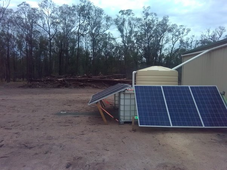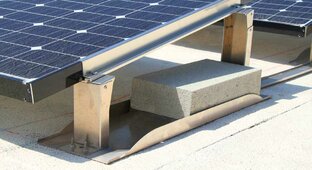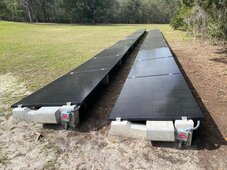Kevin322
New Member
I have a certain amount of space to put panels in my yard. Panels are so cheap and mounting is so expensive, that I'm thinking about just putting the panels flat on the ground. It will be less efficient, but I can just buy more panels to cover essentially the entire available area, so all of the sunlight I could get access to is hitting a panel.
My question is how/whether I need to secure the panels in such a scenario? My understanding is that you generally need to be concerned about the panel at an angle acting as a sail, but that wouldn't be an issue here. Can I just set them on the ground, and leave it at that?
My question is how/whether I need to secure the panels in such a scenario? My understanding is that you generally need to be concerned about the panel at an angle acting as a sail, but that wouldn't be an issue here. Can I just set them on the ground, and leave it at that?








